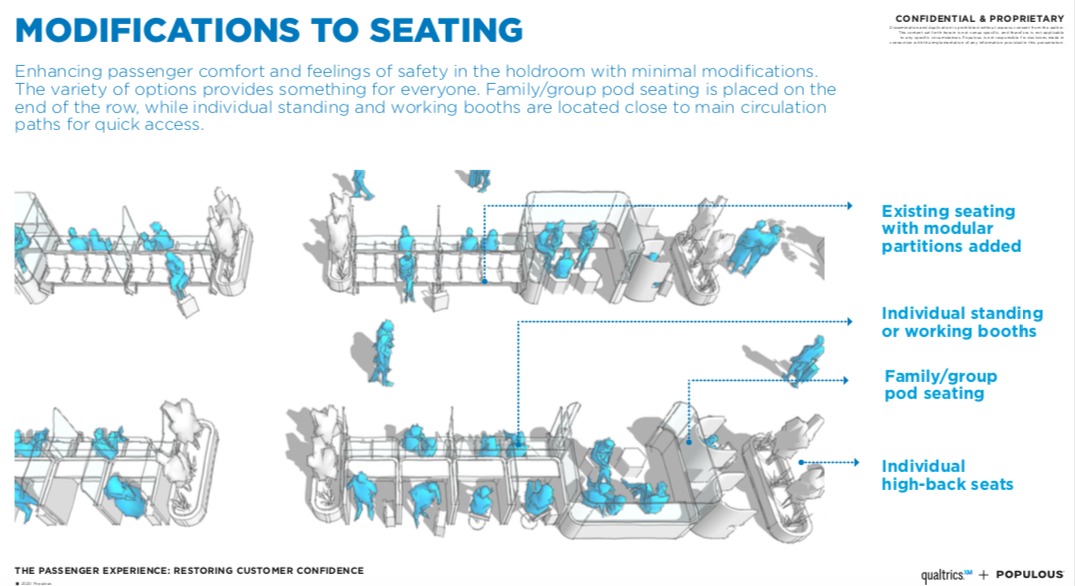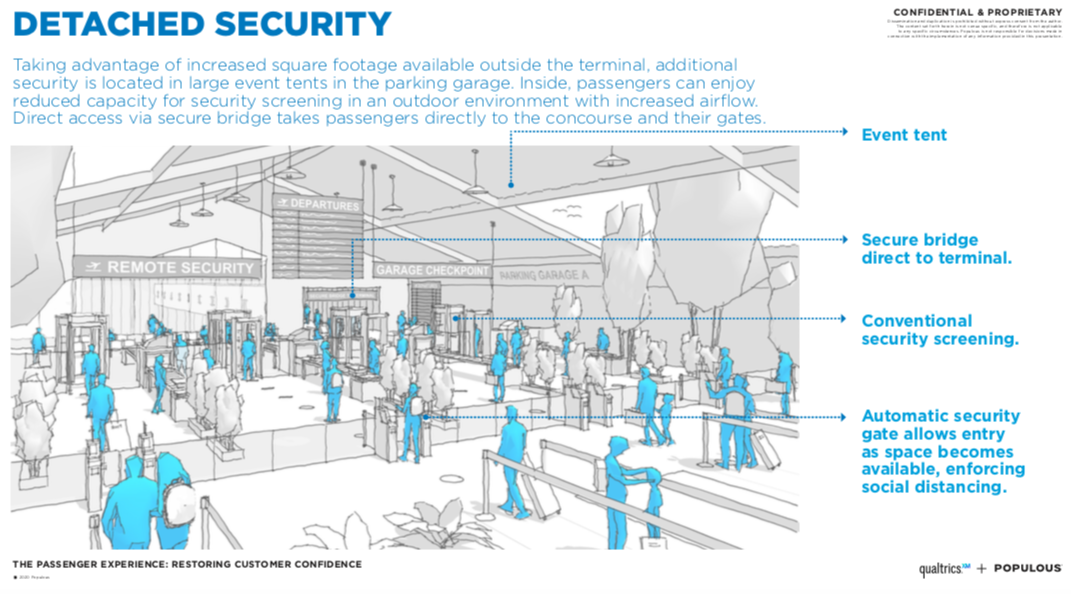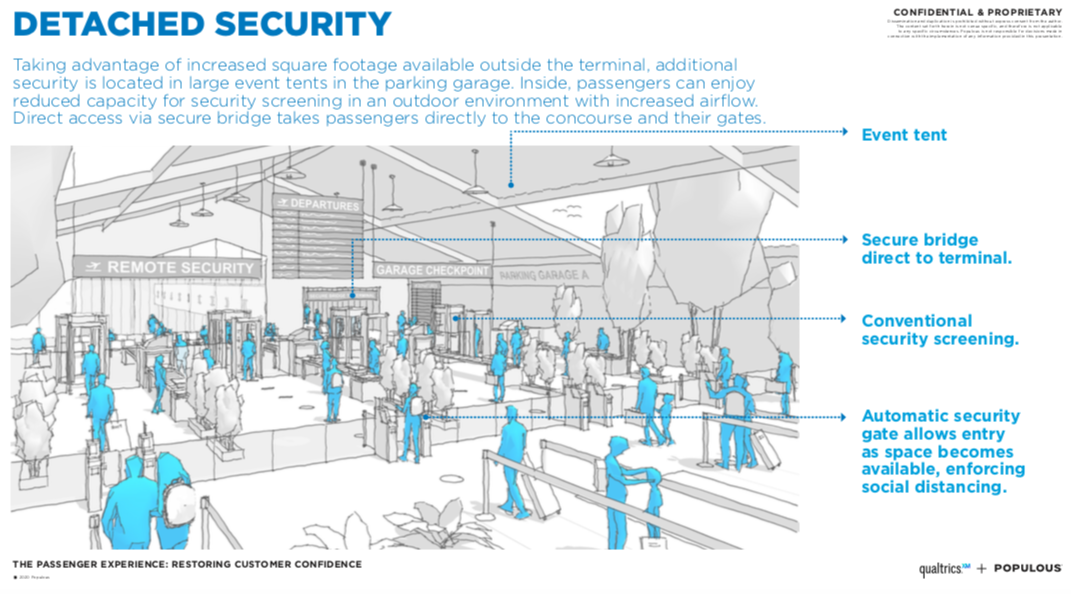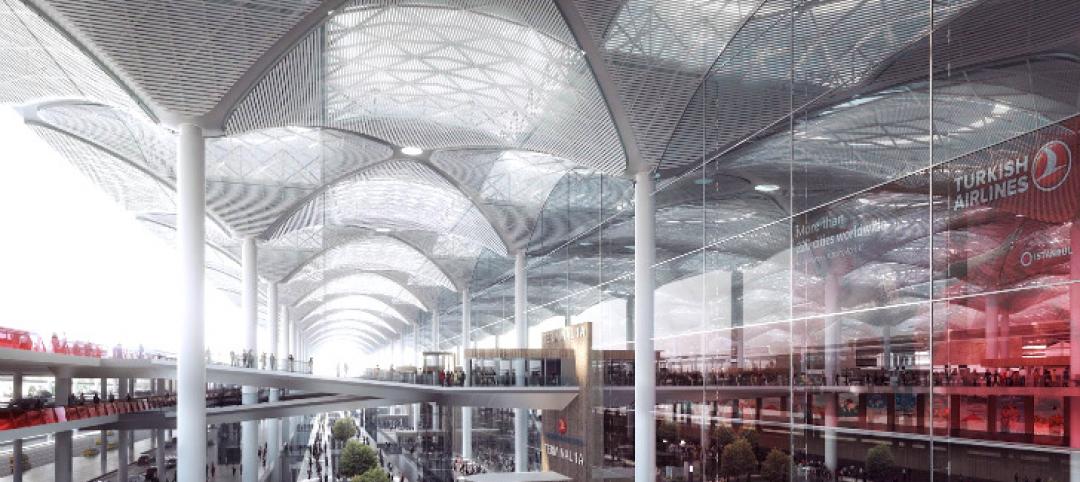Global design firm Populous, with Qualtrics, has released the results of a national survey that can help owners and operators of airports understand how COVID-19 has influenced passengers’ expectations and fears during travel.
With responses from nearly 2,200 people age 18+ who have taken at least five trips over the last 18 months for business or leisure, the survey revealed data and potential solutions to an array of concerns, including security checkpoints, food and beverage purchases, gate boarding and arrivals and more.

“While travel was very limited during the start of the pandemic, passengers have begun to travel again, either for leisure or business, and it’s important that airports are taking the proper steps to a safe environment and pleasant experience for these passengers,” said Geoffrey Ax, Populous Americas Aviation Market Leader and Principal. “With the results of our survey with Qualtrics, we are able to help our airport clients develop achievable solutions that can help them regain passenger confidence and trust.”
Overall, business travelers were the dominant group of respondents planning to travel in 2020 at 84 percent, over leisure travelers, of which only 71 percent planned to travel this year. In general, 79 percent of all respondents were comfortable going to an airport with the proper protection and protocols in place, such as wearing masks and social distancing, and limiting the number of passengers in the concourse.

Among the top concerns impacting passenger trust and confidence were the ways staff and passengers will behave. Nearly 70 percent of travelers were concerned with someone around them having COVID-19, with a close 66 percent were concerned about others not following CDC guidelines. The majority of business and leisure travelers were also concerned about specific areas around the airport; seating locations being first, with security checkpoints a close second.

Other findings from the survey include:
– Transportation: The COVID-19 pandemic is even changing the way that passengers arrive and depart the airport. In cities, a huge number of passengers took public transportation (decreased two percent) or ridesharing services (preference decreased by 10 percent). Now, the percentage of travelers who were willing to drive their own car to the airport increased six percent, and those who would get rides from family and friends increased five percent. The data found in this survey will help airports devise a better plan for pickup and drop-off areas, which in many cities, are already congested. Visible and color-coded numbered beacons can provide unmistakable pickup locations so that passengers and drivers can easily find each other.
– Security Screening: Bringing to mind security screenings, travelers’ picture long, dense lines, and lots of touchpoints. The survey revealed that about two-thirds of travelers are concerned with maintaining social distancing while going through security, and 84 percent were willing to use a phone app for a timed entry experience. By implementing timed entry, virtual queuing and detached security checkpoints at airports, capacity can be limited, and passengers will be notified when they should arrive, and which entry and security line to use. Queuing modifications include barriers between different security lines, which also help to maximize space, as a socially distanced security line takes up lots of square footage.
– Hold Rooms: As the number one concern is interaction with other passengers who might have been exposed to COVID-19, the hold rooms, or areas where passengers wait to board the plane, is an area of worry. By creating a hold room layout that supports social distancing, with a combination of seated and standing partitions, airports can separate passengers who are seated, boarding, deplaning, or interacting with airline staff. The creation of individual and group pods, especially ones with access to charging stations and luggage storage, are also a great option to ease passengers’ concerns. These pods could also be rented, so airports could regain some lost revenue.
– Food & Beverage: For many flyers, the first stop after the security checkpoint is a food and beverage station or retail shop to stock up on in-flight snacks and reading materials. The survey found that although passengers intended to arrive early to the airport during COVID-19, they are less likely to spend money on food and beverage; 70 percent of passengers preferred to use an app to order food and beverage for pickup or delivery. Airports could consider a temporary conversion of food courts that include modular pod seating configured to accommodate multiple user groups, or locker service for pre-ordering and pickup of food.
Related Stories
| Jun 2, 2014
Parking structures group launches LEED-type program for parking garages
The Green Parking Council, an affiliate of the International Parking Institute, has launched the Green Garage Certification program, the parking industry equivalent of LEED certification.
| May 29, 2014
7 cost-effective ways to make U.S. infrastructure more resilient
Moving critical elements to higher ground and designing for longer lifespans are just some of the ways cities and governments can make infrastructure more resilient to natural disasters and climate change, writes Richard Cavallaro, President of Skanska USA Civil.
| May 23, 2014
Top interior design trends: Gensler, HOK, FXFOWLE, Mancini Duffy weigh in
Tech-friendly furniture, “live walls,” sit-stand desks, and circadian lighting are among the emerging trends identified by leading interior designers.
| May 20, 2014
Kinetic Architecture: New book explores innovations in active façades
The book, co-authored by Arup's Russell Fortmeyer, illustrates the various ways architects, consultants, and engineers approach energy and comfort by manipulating air, water, and light through the layers of passive and active building envelope systems.
| May 19, 2014
What can architects learn from nature’s 3.8 billion years of experience?
In a new report, HOK and Biomimicry 3.8 partnered to study how lessons from the temperate broadleaf forest biome, which houses many of the world’s largest population centers, can inform the design of the built environment.
| May 13, 2014
19 industry groups team to promote resilient planning and building materials
The industry associations, with more than 700,000 members generating almost $1 trillion in GDP, have issued a joint statement on resilience, pushing design and building solutions for disaster mitigation.
| May 11, 2014
Final call for entries: 2014 Giants 300 survey
BD+C's 2014 Giants 300 survey forms are due Wednesday, May 21. Survey results will be published in our July 2014 issue. The annual Giants 300 Report ranks the top AEC firms in commercial construction, by revenue.
| Apr 29, 2014
USGBC launches real-time green building data dashboard
The online data visualization resource highlights green building data for each state and Washington, D.C.
| Apr 22, 2014
Bright and bustling: Grimshaw reveals plans for the Istanbul Grand Airport [slideshow]
In partnership with the Nordic Office of Architecture and Haptic Architects, Grimshaw Architects has revealed its plans for the terminal of what will be one of the world's busiest airports. The terminal is expected to serve 150 million passengers per year.
| Apr 9, 2014
Steel decks: 11 tips for their proper use | BD+C
Building Teams have been using steel decks with proven success for 75 years. Building Design+Construction consulted with technical experts from the Steel Deck Institute and the deck manufacturing industry for their advice on how best to use steel decking.

















